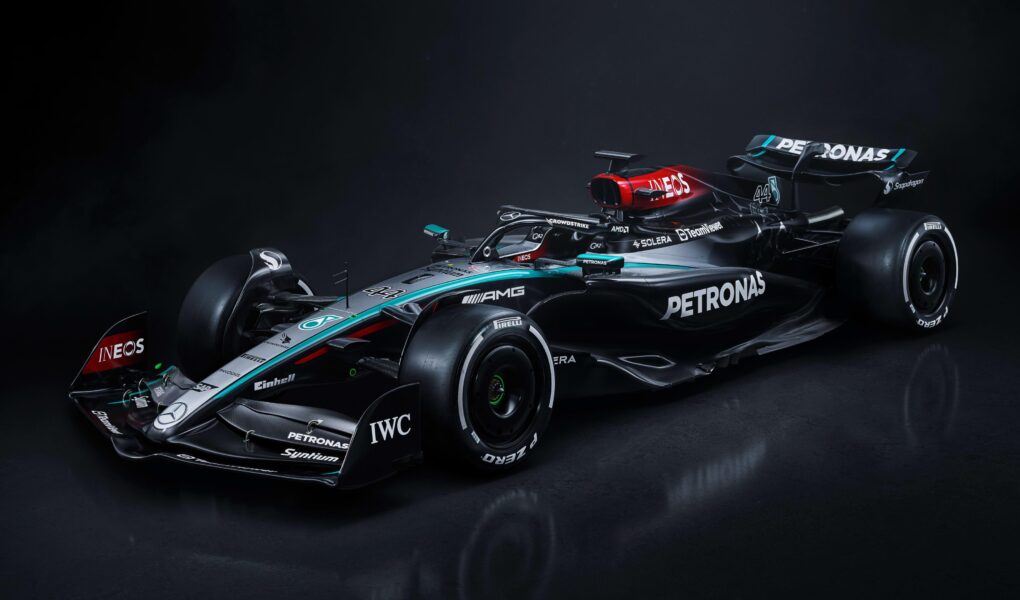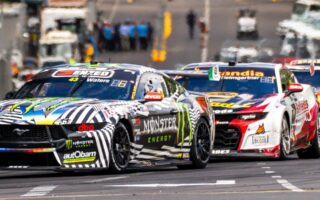In the world of motorsport, few spectacles rival the exhilaration and precision of Formula 1 racing. With speed as its defining characteristic, this elite form of competition captivates fans and engineers alike, pushing the boundaries of technology and human skill. At the heart of every race lies a tantalizing question: just how fast can these remarkable machines go? As we dive into the intricacies of Formula 1 car top speed, we will explore the engineering marvels that fuel these high-octane athletes, the factors that influence their velocity, and the relentless pursuit of performance that keeps teams vying for supremacy on the world stage. Buckle up as we navigate the thrilling intersection of physics, innovation, and racing where the quest for speed knows no limits.
Table of Contents
- Unveiling the Mechanics Behind Formula 1 Car Top Speeds
- Aerodynamics and Design: The Key Contributors to Velocity
- Engine Power and Technology: Fueling the Need for Speed
- Strategies for Enhancing Performance on Race Day
- Q&A
- Closing Remarks
Unveiling the Mechanics Behind Formula 1 Car Top Speeds
To truly appreciate the astonishing speeds of Formula 1 cars, one must delve into the intricate interplay of various engineering principles and aerodynamic designs. A key player in this dynamic is the aerodynamic downforce generated by the car’s wings and body shape. This downforce plays a crucial role in maintaining traction and stability at high speeds, allowing drivers to navigate corners with confidence. The balance between downforce and drag is essential—the more downforce a car produces, the more grip it has, but also the more drag it faces, potentially capping its top speed. Adjustments to wing angles and bodywork can dramatically alter this balance, showcasing the fine-tuning required for optimal performance on different circuits.
Another vital component contributing to top speeds is the power unit that propels these machines. Modern Formula 1 cars utilize hybrid power units, consisting of a turbocharged internal combustion engine paired with an Energy Recovery System (ERS). This collaboration enhances acceleration by harnessing energy that would otherwise be wasted during braking. In addition to power units, critical factors include the choice of tires and their ability to maintain grip under varying conditions. It is through meticulous engineering and innovation across these elements that teams can achieve staggering velocity on the track, making each race not just a contest of speed, but a showcase of cutting-edge technology.
Aerodynamics and Design: The Key Contributors to Velocity
The pursuit of top speed in Formula 1 owes much to the meticulous attention paid to aerodynamics and vehicle design. These aspects are not merely technicalities; they are fundamental principles that dictate how a car cuts through the air, maintaining control at exhilarating speeds. The shape of the car, influenced by aerodynamic studies, plays a decisive role in minimizing drag while maximizing downforce, pivotal for translating power into velocity. Key design features contributing to this include:
- Front and Rear Wing Designs: Engineered to optimize airflow and provide necessary stability.
- Side Skirts: Essential for enhancing ground effect and reducing turbulence.
- Bargeboards: Helps redirect the air around the car to improve overall aerodynamic efficiency.
Furthermore, the weight distribution and materials used in construction significantly influence acceleration and cornering prowess. An F1 car’s ability to achieve remarkable top speeds is a delicate balance of these factors woven into its design philosophy. A well-designed chassis that integrates these aerodynamic elements can provide a competitive edge. A comparison of some recent F1 car specifications highlights these innovative approaches:
| Car Model | Top Speed (km/h) | Aerodynamic Features |
|---|---|---|
| Mercedes W12 | 330+ | Sleek bodywork, active aerodynamic adjustments |
| Red Bull RB16 | 325+ | Conical shape, optimized airflow management |
| Ferrari SF71H | 340+ | Dynamic rear wing, extensive underbody design |
Engine Power and Technology: Fueling the Need for Speed
In the exhilarating world of Formula 1, every fraction of a second counts, and this is where the combination of engine power and cutting-edge technology manifests an extraordinary spectacle. Teams engage in relentless innovation, employing hybrid power units that not only maximize speed but also enhance efficiency. These engines blend ultra-high-performance gasoline engines with electric motors, enabling the cars to achieve astounding speeds on the track while minimizing fuel consumption. The synergy of these components ensures that drivers can unleash their full potential, reaching top speeds often exceeding 230 mph, a feat made possible through advancements in technology and engineering.
The pursuit of speed extends beyond just raw horsepower; it incorporates a myriad of technological features designed to enhance the driving experience. Notable aspects include:
- Aerodynamics: Sophisticated design elements that reduce drag and increase downforce.
- Telemetry System: Real-time data collection that provides insights into car performance, helping engineers make on-the-fly adjustments.
- Energy Recovery Systems (ERS): Systems that store energy during braking and release it for acceleration, providing an additional power boost.
Together, these elements create a potent combination that not only defines the pinnacle of motorsport engineering but also captivates fans around the world. Below is a comparative table showcasing the stunning stats of some of the fastest F1 cars:
| Car Model | Engine Power (HP) | Top Speed (MPH) |
|---|---|---|
| MERCEDES W11 | 1000 | 231.5 |
| RED BULL RB16 | 950 | 230.0 |
| FERRARI SF71H | 880 | 216.0 |
Strategies for Enhancing Performance on Race Day
In the high-octane world of Formula 1, performance on race day can often make the difference between victory and defeat. To maximize your car’s top speed, consider these essential strategies that can significantly enhance your race day performance:
- Aerodynamics: Ensure your car’s aerodynamic features are optimized for minimal drag, allowing for greater acceleration and speed on straight sections of the track.
- Optimal Tire Selection: Choose tires that suit the weather conditions and track surface, as the right tire can improve grip and reduce lap times.
- Engine Tuning: Fine-tune the engine settings to maximize power output while balancing fuel efficiency during the race.
- Race Strategy: Develop a well-planned race strategy that considers pit stops, fuel loads, and tire wear to capitalize on opportunities to overtake competitors.
Moreover, understanding the importance of teamwork and communication cannot be overlooked. Drivers must work closely with their engineers and crew to ensure everyone is on the same page regarding race tactics. Consider using tools like telemetry data to analyze performance trends and make real-time adjustments. The following table summarizes critical factors impacting performance:
| Factor | Impact on Performance |
|---|---|
| Aerodynamics | Decreased drag, increased speed |
| Tire Selection | Improved traction and handling |
| Engine Power | Higher acceleration |
| Driver Skill | More efficient lap times |
Q&A
Q&A: Understanding Formula 1 Car Top Speed
Q1: What factors contribute to the top speed of a Formula 1 car?
A: The top speed of a Formula 1 car is influenced by several key factors, including aerodynamics, engine power, tire grip, and the design of the car itself. Aerodynamics play a crucial role; a well-designed car minimizes drag while maximizing downforce. The power of the hybrid engine, which combines internal combustion with electric energy, significantly contributes to acceleration and overall speed. Additionally, the grip of the tires on the racing surface can determine how effectively a car can translate its engine power into forward motion.
Q2: What is the current record for the highest top speed achieved in Formula 1?
A: As of October 2023, the record for the highest top speed achieved in Formula 1 is held by Valtteri Bottas, who reached an astonishing 231.49 mph (372.5 km/h) during the 2019 Mexican Grand Prix in a Mercedes W10. This remarkable feat showcases the engineering prowess and performance capabilities of modern F1 cars.
Q3: How does the layout of a racetrack affect a car’s top speed?
A: The layout of a racetrack significantly impacts a Formula 1 car’s top speed due to variations in straightaways and corners. Tracks with long straights, such as the Circuit de Monza, provide opportunities for high speeds, while twisty circuits like Monaco demand lower speeds for quick turns, challenging the drivers’ handling skills. Teams often adjust their car setups, including aerodynamics and gearing, to optimize performance for each specific track.
Q4: Do weather conditions affect the top speed in F1?
A: Yes, weather conditions have a notable impact on top speed in Formula 1. Dry weather typically allows for optimum grip and aerodynamic efficiency, enabling cars to achieve their maximum potential speeds. In contrast, wet conditions can reduce tire grip and lead to slower overall speeds and increased caution from drivers. Moreover, temperature affects tire performance; warmer conditions can enhance tire grip, while colder temperatures may lead to a lack of optimal tire performance.
Q5: How has technology evolved to enhance F1 car speeds?
A: Technology in Formula 1 has advanced dramatically over the years, focusing on both mechanical and electronic innovations. Modern F1 cars utilize hybrid power units, advanced aerodynamics, and materials such as carbon fiber to reduce weight while enhancing strength and rigidity. Additionally, cutting-edge simulations and data analysis allow teams to optimize every aspect of car performance, from tire selection to real-time adjustments during races, pushing the envelope of speed further.
Q6: Can any car achieve similar top speeds to those in Formula 1?
A: While some high-performance production cars and modified vehicles can reach impressive speeds, they lack the specialized technology, design, and engineering that Formula 1 cars possess. F1 cars are meticulously crafted for racing, incorporating unique features such as active aerodynamics and highly efficient power units that allow them to reach extraordinary speeds while maintaining safety and control on the track.
Q7: What role does driver skill play in achieving top speed?
A: Driver skill plays a vital role in achieving top speed in Formula 1. Elite drivers possess the ability to maximize a car’s performance by fine-tuning their throttle control, braking points, and racing lines. Their instincts and reflexes help them navigate corners at high speeds and accelerate efficiently on straights. Ultimately, a combination of driver talent and the car’s engineering determines how quickly a team can complete a lap and reach its top speed.
This Q&A serves to shed light on the fascinating world of Formula 1 car performance, particularly regarding their extraordinary top speeds, revealing the blend of technology, skill, and strategy that defines the sport.
Closing Remarks
As we cross the finish line of our exploration into the exhilarating world of Formula 1 car top speeds, it’s clear that these machines are not just feats of engineering; they embody the relentless pursuit of performance and innovation. The formula for speed is a complex interplay of aerodynamics, power units, and cutting-edge technology, all converging to create a spectacle that captivates fans and pushes drivers to their limits.
While the numbers on the speedometer may dazzle, it’s the stories behind each record-breaking run, the strategic intricacies of race day, and the sheer passion for motorsport that truly fuel the excitement. As teams continue to evolve and innovate, one can only imagine how the boundaries of speed will be redefined in the future.
Whether you’re a die-hard fan or a curious newcomer, the thrill of Formula 1’s top speeds will forever be a testament to human ingenuity and the quest for excellence. So, buckle up—literally and metaphorically—as we anticipate what’s next on the asphalt battlegrounds of racing. The journey of speed is far from over.



